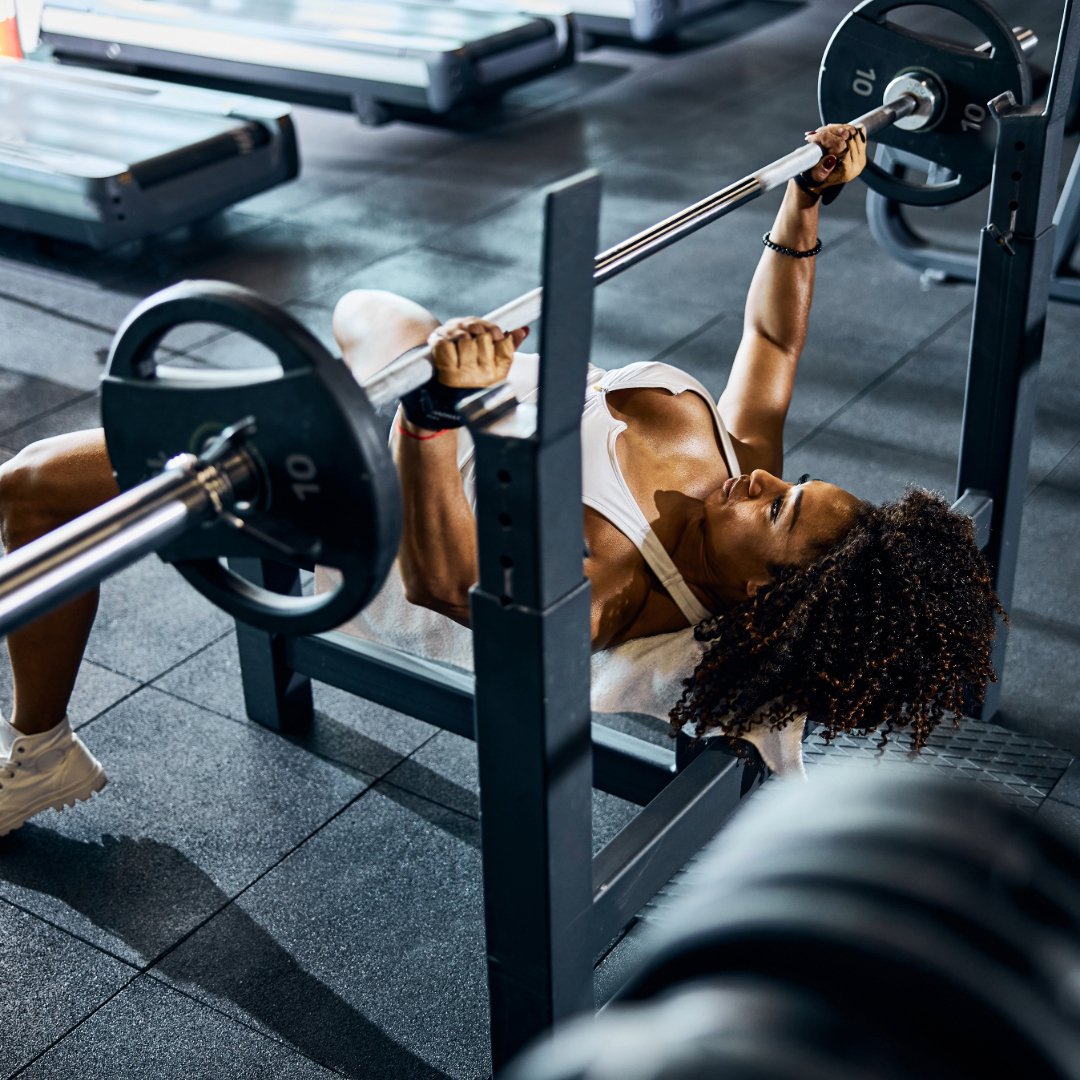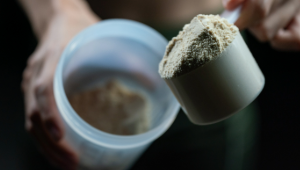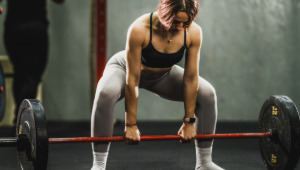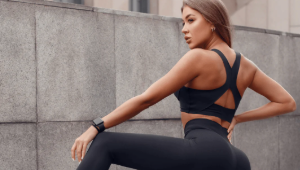Elevate Your Run with the Right Gear
The Journey Begins with the Right Gear
Starting a running routine is an exciting journey, but having the right gear is essential for comfort, performance, and injury prevention. Embarking on this path requires not just determination, but also an understanding of how your attire can significantly impact your running experience.
Understanding the Essentials of Running Gear
In this comprehensive guide, we'll explore everything you need to know about selecting the perfect running clothes, including running jackets for cool weather and running shorts for warm weather, to enhance your experience on the track, trail, or treadmill. The importance of choosing the right gear cannot be overstated; it's about much more than just aesthetics. Proper running attire helps regulate your body temperature, wicks away sweat, and can even prevent blisters and chafing, allowing you to run longer distances more comfortably and efficiently.
Making Every Step Count
Whether you're a seasoned marathoner or a casual jogger, understanding the principles behind selecting appropriate running garments will make a noticeable difference in your physical comfort and overall performance. From the breathable fabrics that keep you dry in the sweltering summer heat to the thermal layers that provide warmth during chilly winter runs, knowing what to wear in various conditions is crucial. Additionally, we'll delve into the significance of fit, explaining why the right size can enhance your mobility and prevent discomfort, and why the wrong size can be a hindrance to your progress. We'll also discuss the benefits of specialized running apparel, such as compression gear that supports muscle recovery and pieces designed with reflective elements for safety during early morning or late evening runs. By the end of this guide, you'll be well-equipped with the knowledge to choose running clothes that not only look good but also contribute positively to your running journey, ensuring each step is taken with confidence and comfort.
Understanding Your Running Environment for Optimal Gear Selection
Choosing the Best Running Clothes for Hot and Humid vs. Cold weather
The environment in which you run plays a pivotal role in determining the effectiveness and comfort of your running gear. Factors such as weather conditions, terrain, and the duration of your runs should significantly influence your clothing choices. For instance, the humid summer months demand lightweight and breathable fabrics that facilitate sweat evaporation, keeping you cooler and more comfortable. Conversely, during the colder seasons, opting for thermal, layered clothing that traps heat and wicks away moisture will ensure that you remain warm without overheating.
Choosing Gear for Varied Terrains
The terrain you choose to run on—whether it be city streets, rugged trails, or the consistent surface of a treadmill—also dictates specific gear requirements. Rough trails may require shoes with better grip and more durable clothing to withstand the potential scrapes and falls, while urban runners might prioritize reflective gear for visibility during early morning or evening runs.
Weather-Proofing Your Run
Fabrics treated with UV protective coatings and moisture-wicking material can help shield your skin from harmful UV rays, reducing the risk of sunburn and long-term sun damage, and keep you comfortable. For hot climates, selecting garments with UV protection can shield your skin from harmful sun exposure, while in windy and wet conditions, a windbreaker or water-resistant layer can protect against the elements, ensuring that you stay dry and can maintain your body temperature. The duration of your runs also matters; longer runs may require more layers or specialized gear like hydration packs, especially in extreme weather conditions.
 |
| PeakPower Seamless Leggings |
Fabric Matters: Selecting the Best Materials for Your Running Apparel
The Importance of Choosing the Right Materials
Selecting the appropriate fabric for your running clothes is as crucial as choosing the right shoes. The significance of moisture-wicking, breathable fabrics such as polyester, nylon, or merino wool cannot be overstated. These materials are engineered to pull moisture away from the skin to the outer surface of the fabric, where it can evaporate more quickly, keeping you dry and comfortable during intense activities. This feature is particularly important for runners, as it helps to regulate body temperature by providing a cooling effect when the body heats up.
Regulating Body Temperature and Managing Sweat
By effectively managing sweat and facilitating its evaporation, these fabrics play a key role in helping to regulate body temperature. This is particularly true for running socks and underwear designed for athletes. This regulation is vital for maintaining optimal performance and comfort, regardless of the weather conditions. In hot conditions, breathable fabrics help to cool the body by allowing air to circulate close to the skin. In cooler conditions, they can prevent a buildup of moisture, which can lead to chilling, by ensuring that sweat moves away from the body and evaporates quickly.
Preventing Chafing and Enhancing Comfort
Moreover, the smooth and soft textures of materials like polyester, nylon, and merino wool minimize friction against the skin, which significantly reduces the risk of chafing—a common issue for runners. Chafing can turn a comfortable run into a painful ordeal, making the choice of fabric an important consideration for long-distance runners and those prone to skin irritation.
In summary, the right fabric is essential for any runner looking to enhance their training experience, whether it be through moisture-wicking running tops or breathable running shorts. By choosing garments made from moisture-wicking, breathable materials, runners can ensure that they stay dry, comfortable, and focused on their performance, regardless of the distance or the weather conditions. This careful selection of fabric not only improves the overall running experience but also helps in preventing potential discomforts and injuries related to unsuitable clothing.
 |
| Seamless Gym Set |
Choosing the Right Fit: How to Wear Running Clothes for Maximum Comfort and Performance
The Crucial Balance Between Snugness and Freedom
The fit of your running clothes is just as vital as the fabric from which they are made. A proper fit ensures comfort and performance, allowing for a range of motion that is essential for running efficiency. Clothing that is too tight can restrict movement and even circulation, leading to discomfort and potentially affecting your performance. This is particularly relevant when it comes to running tights and sports bras. On the other hand, attire that is too loose can cause chafing, act as a drag, and become a distraction due to the need for constant adjustment. Finding the right balance of snugness and freedom of movement is key.
Guidance on Achieving the Perfect Fit
To select clothing that offers this balance, consider pieces that are designed specifically for running. These items often feature ergonomic designs that mimic the body's shape and movements, providing a snug fit where necessary without constricting movement. Look for features such as flat seams that reduce irritation, elastic waistbands that provide a secure but comfortable fit, and stretchable fabrics that move with your body.
Personal Comfort and Performance Enhancement
Moreover, the concept of the "right fit" can vary from one runner to another, making it essential to consider personal preference and comfort alongside general guidelines. Some runners prefer compression gear, which offers tight support and can help in muscle recovery, while others might opt for a slightly looser fit that offers more air circulation. Experimenting with different fits and styles within the realm of high-quality running apparel is crucial to finding what works best for you, enhancing both your comfort and your performance on the run.
In conclusion, the significance of choosing running clothes with the right fit cannot be underestimated. By prioritizing both comfort and performance, and seeking out garments that offer an ideal balance between snugness and freedom of movement, runners can ensure they are setting themselves up for success. Whether tackling a long-distance run or a quick jog around the block, the right fit can make all the difference in achieving your running goals.
 |
| Long Sleeve Stripped Set 2.0 |
Layering for Versatility : Mastering the Art of Dressing for Any Weather
Mastering the Art of Layering
The ability to adapt to changing temperatures and conditions is a key skill for any runner, and mastering the art of layering is essential for staying comfortable and protected throughout your runs. The concept of layering allows you to add or remove clothing based on your body's temperature and the weather conditions, ensuring optimal comfort and protection. The foundation of a good layering system for running includes lightweight, moisture-wicking base layers, insulating mid-layers, and weather-resistant outer layers.
Choosing the Right Base Layer
The base layer is critical as it directly touches your skin. Its primary function is to wick moisture away from the body to keep you dry and prevent the chilling effect that can occur when sweat evaporates. Opt for materials like polyester, nylon, or merino wool that are known for their moisture-wicking properties. These fabrics are not only effective in managing moisture but also quick-drying and odor-resistant, making them ideal for the base layer.
The Importance of the Mid-Layer
The mid-layer serves as the insulating component of your outfit, trapping body heat to keep you warm. For running in cooler temperatures, choose a mid-layer that provides sufficient insulation yet is breathable enough to allow excess heat and moisture to escape. Fleece is a popular choice for its warmth and lightweight properties, ensuring that you stay warm without feeling weighed down.
Weather-Resistant Outer Layer
The outer layer is your shield against the elements, designed to protect you from wind, rain, and snow while still allowing vapor to escape to prevent overheating and moisture buildup. Look for jackets and vests that are wind and water-resistant, yet breathable. Features such as adjustable cuffs, vents, and water-repellent coatings can enhance functionality and comfort.
By employing a strategic layering system, runners can easily adjust their attire to suit varying temperatures and weather conditions, ensuring they remain comfortable, dry, and focused on their performance. The key is to choose layers that can be easily added or removed and that work together to manage moisture, insulate, and protect against the weather, making every run a pleasant experience regardless of the climate.
Additional Considerations for the Perfect Run
Safety First: The Role of Reflective Elements
While fabric, fit, and layering are crucial for comfort and performance, safety should never be overlooked. Reflective elements on running attire are a vital consideration, especially for those who run early in the morning or late in the evening when light conditions are low. Reflective logos, stripes, or patches increase visibility to drivers and other pedestrians, significantly enhancing safety. Investing in clothing with built-in reflective features can make a critical difference in low-light conditions, ensuring you are seen and safe.
Enhancing Functionality with Pockets, Ventilation, and UV Protection
Beyond safety features, additional functionalities in running clothes can contribute greatly to your running experience. Pockets, for example, offer a convenient place to store essentials like keys, ID, or a smartphone. Choosing garments with secure, zipped pockets can provide peace of mind, allowing you to focus on your run without worrying about losing your belongings. Ventilation panels are another beneficial feature, incorporated into many running garments to allow for increased airflow to areas that tend to overheat, such as the back and underarms. These strategically placed panels can help regulate body temperature, preventing overheating and maintaining comfort throughout your run. Lastly, UV protection is an increasingly important feature in running clothing, especially for those who train in sunny conditions. Fabrics treated with UV protective coatings can help shield your skin from harmful UV rays, reducing the risk of sunburn and long-term sun damage. This feature is particularly significant for long-distance runners who spend extended periods outdoors.
Incorporating these additional considerations into your choice of running attire can significantly enhance your running experience. Reflective elements for safety, functional features like pockets and ventilation panels for comfort and convenience, and UV protection for health are all aspects that contribute to a well-rounded running wardrobe, ensuring you're prepared for whatever your running journey brings.
Running Gear Essentials: Wrapping It Up
Gear Up for Success
Throughout this guide, we've explored the foundational elements that contribute to selecting the perfect running clothes, emphasizing the importance of fabric, fit, layering, and additional functionalities for a comprehensive running wardrobe. Starting with the choice of fabric, we highlighted how moisture-wicking, breathable materials like polyester, nylon, and merino wool play a pivotal role in managing sweat, regulating body temperature, and ensuring comfort during runs. The significance of choosing the right fit in running clothes, which includes features to sweat away moisture and keep you cool, cannot be underestimated.
Layering for versatility emerged as a crucial strategy for adapting to varying temperatures, with recommendations for lightweight base layers, insulating mid-layers, and weather-resistant outer layers to maintain optimal comfort and protection in any weather condition. Furthermore, we addressed additional considerations that elevate the functionality and safety of running attire, including the importance of reflective elements for visibility, pockets for convenience, ventilation panels for temperature regulation, and UV protection for sun safety.
As we conclude this guide, it's essential to remember that the perfect running wardrobe is highly personal and should cater to your individual needs, preferences, and the specific conditions in which you run. By applying the tips and recommendations discussed, you can make informed choices about your running clothes, ensuring they not only enhance your performance but also increase your enjoyment of the sport. Whether you're a seasoned marathon runner or just starting out, taking the time to select the right running gear can make all the difference in achieving your running goals and enjoying every step of the journey.











1 comment
Andrea
What a comprehensive and insightful guide! As someone who recently embarked on their running journey, the importance of selecting the right gear has never been more apparent to me. I’ve struggled with chafing and overheating in the past due to poor fabric choices and ill-fitting clothes. This post not only clarified why these issues occur but also offered practical solutions to avoid them in the future. The emphasis on safety through reflective elements and the importance of layering for different weather conditions are particularly useful tips. I’m now looking forward to applying these recommendations to enhance my running experience. Thank you for sharing such valuable advice!
Leave a comment
All comments are moderated before being published.
This site is protected by reCAPTCHA and the Google Privacy Policy and Terms of Service apply.